The 5 Animals with the Shortest Lifespans


Written and verified by the biologist Francisco Morata Carramolino
Life expectancy is one of the most variable aspects between species. While some animals like the Greenland shark can live to over 300 years old, others are much less long-lived. Find out about the animals with the shortest lifespans.
Life expectancy in natural conditions is relatively difficult to measure, as it requires very constant monitoring of the animal or the use of molecular techniques. In captivity it’s much simpler, but the conditions are very different from the natural world and, consequently, the life expectancy as well.
Although larger animals tend to live longer, this isn’t always the case. Other factors can also influence longevity, such as sex, caste or group (taxon) to which the species belongs. That said, many of the animals with the shortest lifespans are invertebrates. Here you can learn more about them.
Some of the animals with the shortest lifespans
For some animals, the idea of living a short but intense existence is the only option. In the following lines, we’ll tell you some traits about 5 species that stand out for their short lifespans.
1. Turquoise killifish ( Nothobranchius furzeri )
This small fish, which can reach 6.5 centimeters, has an extraordinarily short life expectancy. It inhabits naturally in African pools, which dry out every year. Therefore, it has an enormous evolutionary pressure to develop very quickly and lay eggs, which will resist until the arrival of new waters.
Consequently, turquoise killifish have one of the shortest lives of all vertebrates, if not the shortest. In captivity, a life expectancy that varies between 3 and 12 months has been recorded.
This short life span offers a rare opportunity to scientifically study aging, which typically occurs over years or decades in other animals.
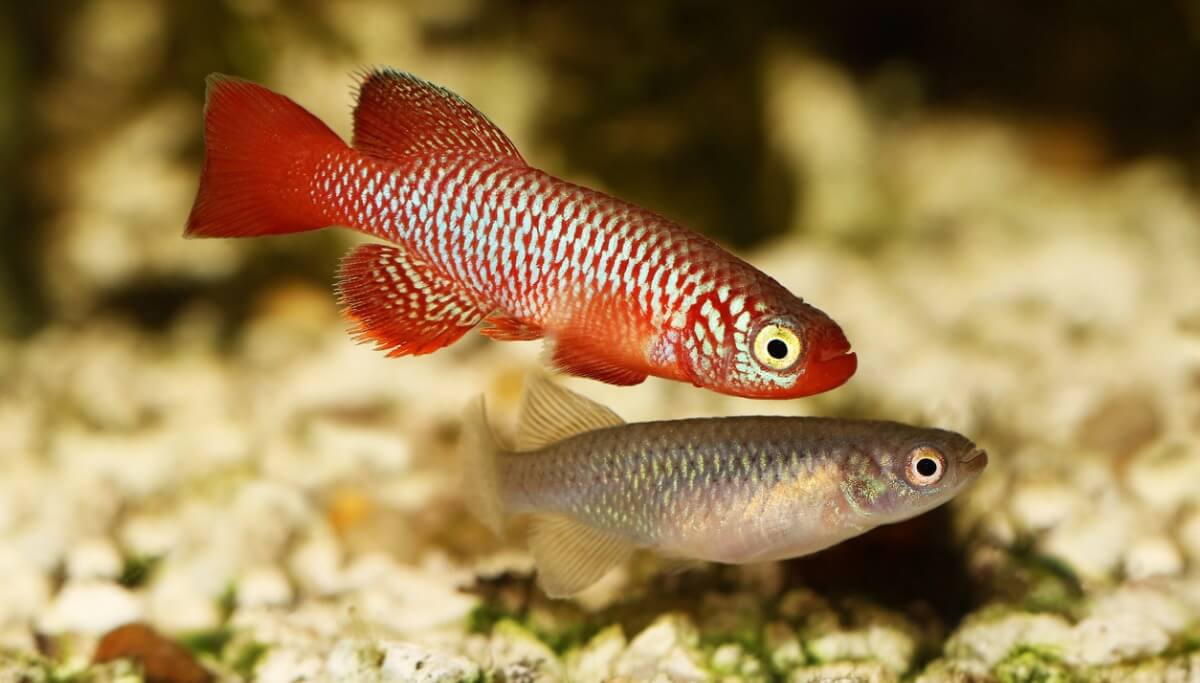
2. American mayfly (Dolania americana )
Mayflies are a famously short-lived order of insects. Their lives are so short that even their name reflects this. Among all the mayflies, Dolania americana has one of the shortest life expectancies.
Some people believe that mayflies live for only a few hours or a few days, but this isn’t entirely true. These insects spend the vast majority of their lives as aquatic larvae, submerged in rivers. This stage can last around a year, depending on the species.
When the mayflies are ready, they transform into adults through metamorphosis. All adults surface at the same time, live for a maximum of a couple of days, and die after reproducing.
American Dolania is a very special case. Although their larval phase lasts over a year, adults only live for around 5 minutes. In this period, they have to find a mate, reproduce and lay their eggs in the water.
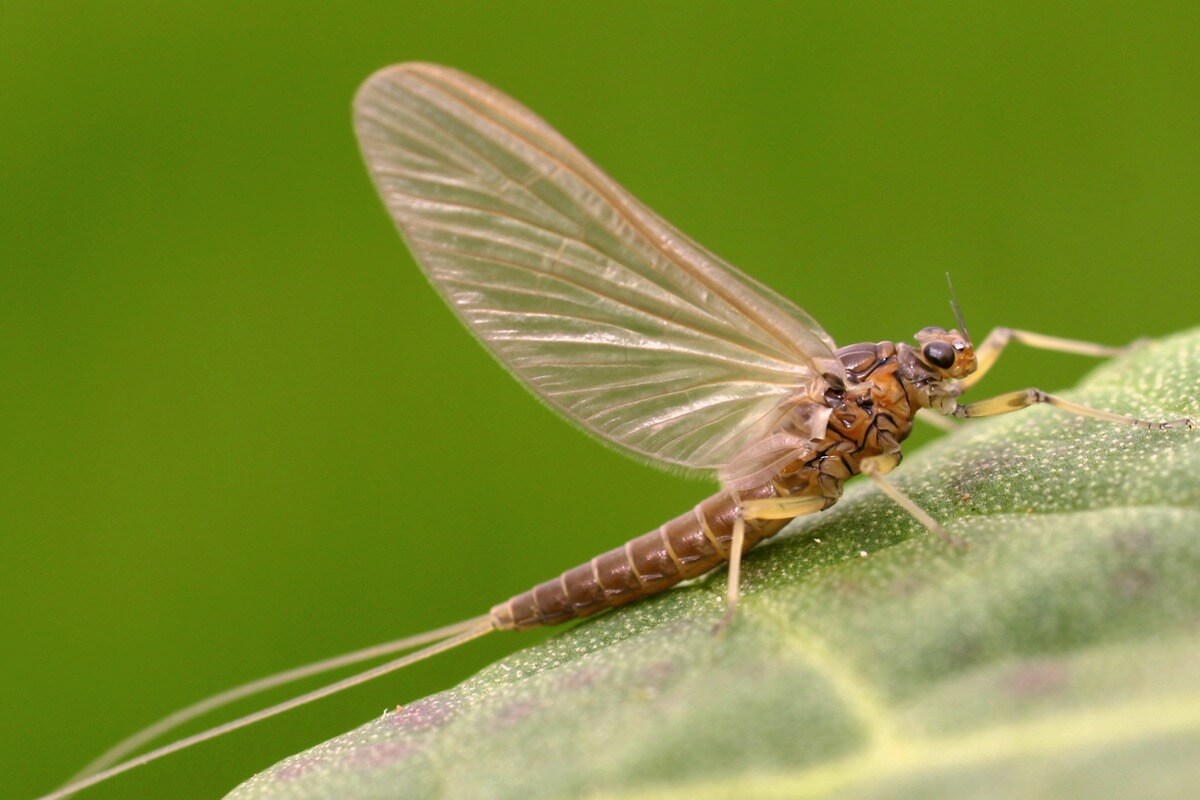
3. Caenorhabditis elegans
This tiny nematode, with the appearance of a transparent worm, is only 1 millimeter in length and feeds on microorganisms. Its life span varies depending on environmental conditions, such as temperature or oxygen levels, but it usually lasts between 12 and 18 days.
Oddly enough, C. elegans has been one of the most important animals for humans in the last century. It has been used as an animal model for decades, which has allowed great advances in genetics, biology, and the study of countless diseases.
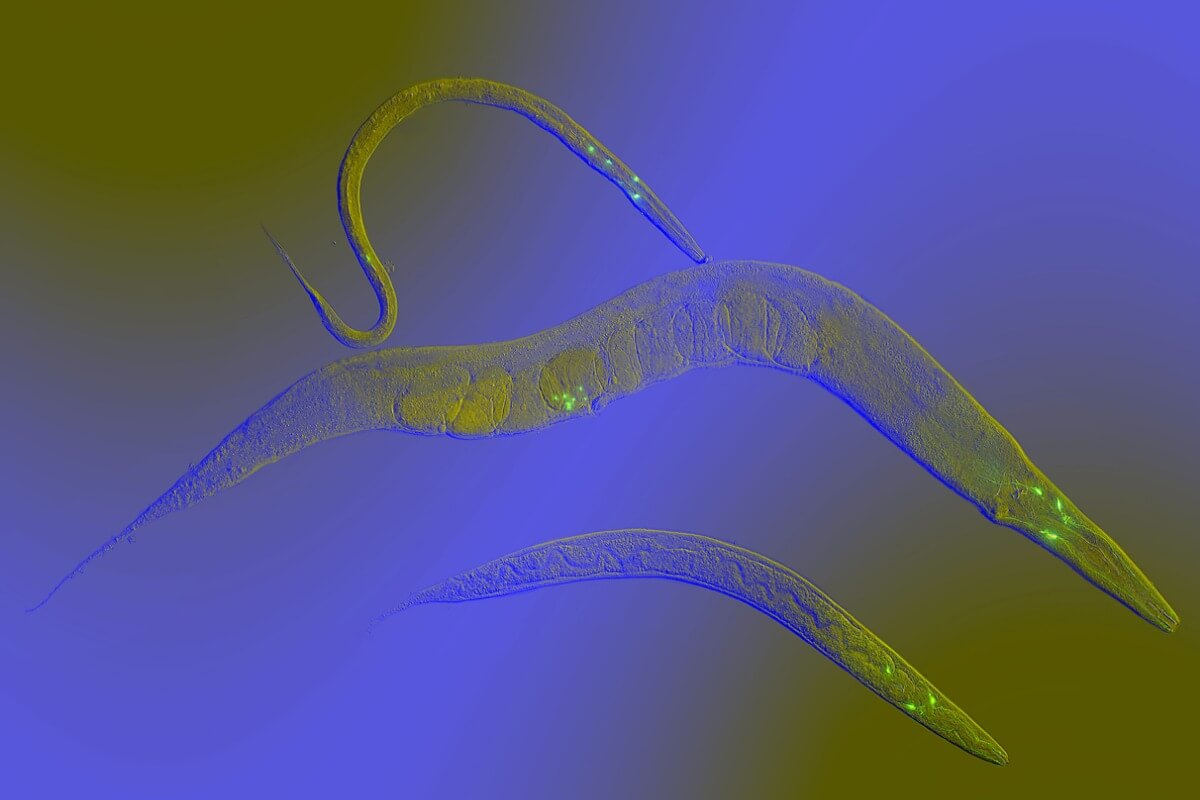
4. Common mosquito (Culex pipiens )
These flying insects, well known for the blood-sucking habits of females, are other animals with short lifespans. However, unlike those named so far, their survival depends on sex.
After hatching, mosquitoes spend the first 5 days of their life as aquatic larvae. After that, they transform into pupae, which take between 2 or 3 days to produce an adult mosquito. Up to this point, there are no noticeable changes between males and females.
Differences in life expectancy are observed in the adult state. Males live for about a week, while females reach one month of life. Both intervals are very short.
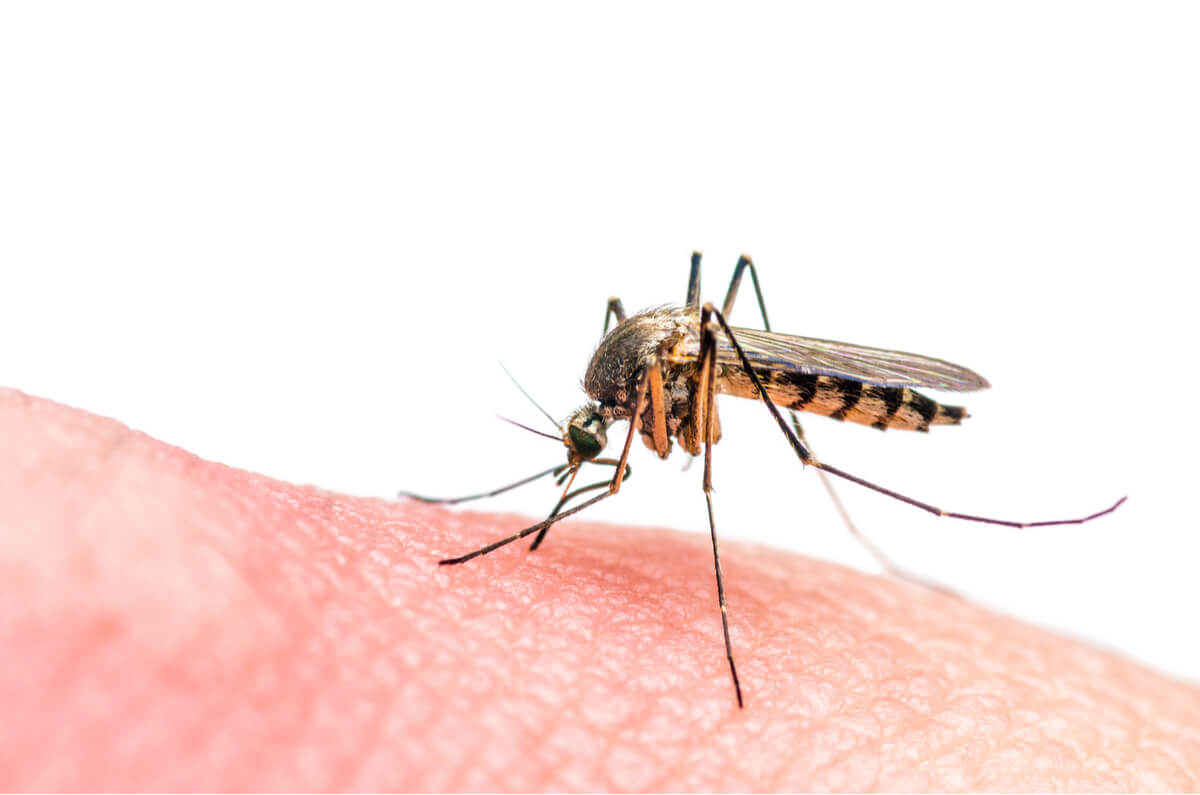
5. Lepidodermella squamata
This invertebrate, which only reaches 0.19 millimeters, inhabits fresh waters around the world. It is a gastroteric, that is, it belongs to a line of tiny, hairy-looking animals, imperceptible and quite unknown to humans.
They all have a very short life. Lepidodermella squamata is no exception, as it only lives for about a week or two.
Why do these animals live so little time?
The study of longevity and senescence are complex fields, and there still aren’t any clear answers. Even so, some factors are known that could intervene in the aging and death of animals, including humans.
Interestingly, one of the most important could be oxygen. This molecule, which the vast majority of living things need to survive, also has troublesome side effects.
Oxygen is used in many metabolic reactions that organisms carry out, such as respiration. These reactions are essential, but they also produce waste called reactive oxygen species (ROS).
Reactive oxygen species attack the body and produce adverse effects, the accumulation of which could be nothing more than animal aging. Even so, there are also other factors that play an important role in tissue aging.
Some of the smaller animals, especially endotherms, have a much faster metabolism than their larger relatives. Therefore, they may be more rapidly affected by reactive oxygen species.
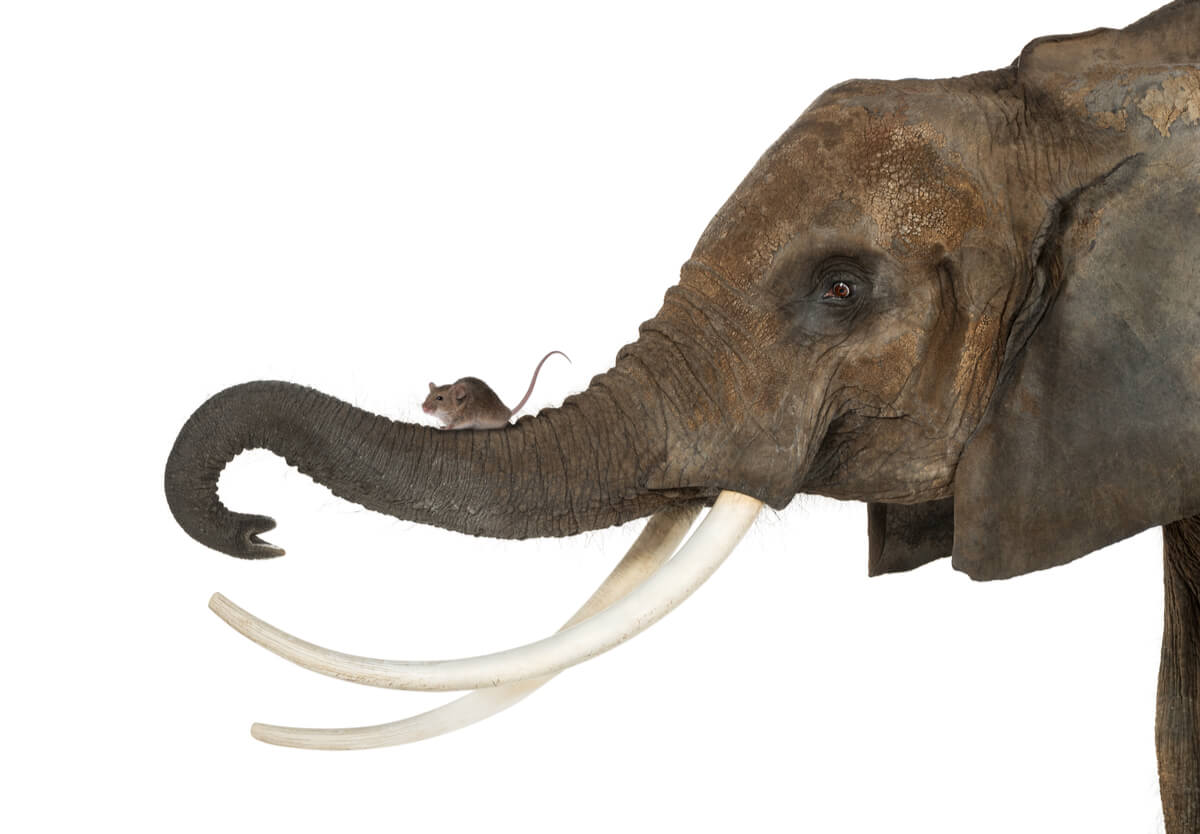
As we’ve seen, the life expectancy of some animals is very short. Although in many cases, we don’t know why their lives are so short, many of the animals with the shortest lifespans are very successful. The reduced life expectancy could be an adaptive and beneficial strategy for some animals.
All cited sources were thoroughly reviewed by our team to ensure their quality, reliability, currency, and validity. The bibliography of this article was considered reliable and of academic or scientific accuracy.
- https://www.nature.com/articles/535453a
- https://www.pbs.org/wnet/nature/alien-empire-mayflies/3413/
- Riddle, D. L., Blumenthal, T., Meyer, B. J., & Priess, J. R. 1997. Aging in C. Elegans. Current Neurology and Neuroscience Reports.
- https://biocyclopedia.com/index/biotechnology_methods/cell_biology_and_genetics/life_cycle_of_the_mosquito_culex_pipiens.php
- https://www.cdc.gov/mosquitoes/about/life-cycles/culex.html
- Faucon, A. S., & Hummon, W. D. 1976. Effects of mine acid on the longevity and reproductive rate of the gastrotricha Lepidodermella squammata (Dujardin). Hydrobiologia, 50: 265–269.
- Selman, C., Blount, J. D., Nussey, D. H., & Speakman, J. R. 2012. Oxidative damage, ageing, and life-history evolution: where now?. Trends in ecology & evolution, 27: 570-577.
- Liguori, I., Russo, G., Curcio, F., Bulli, G., Aran, L., Della-Morte, D., … & Abete, P. 2018. Oxidative stress, aging, and diseases. Clinical interventions in aging, 13: 757.
This text is provided for informational purposes only and does not replace consultation with a professional. If in doubt, consult your specialist.